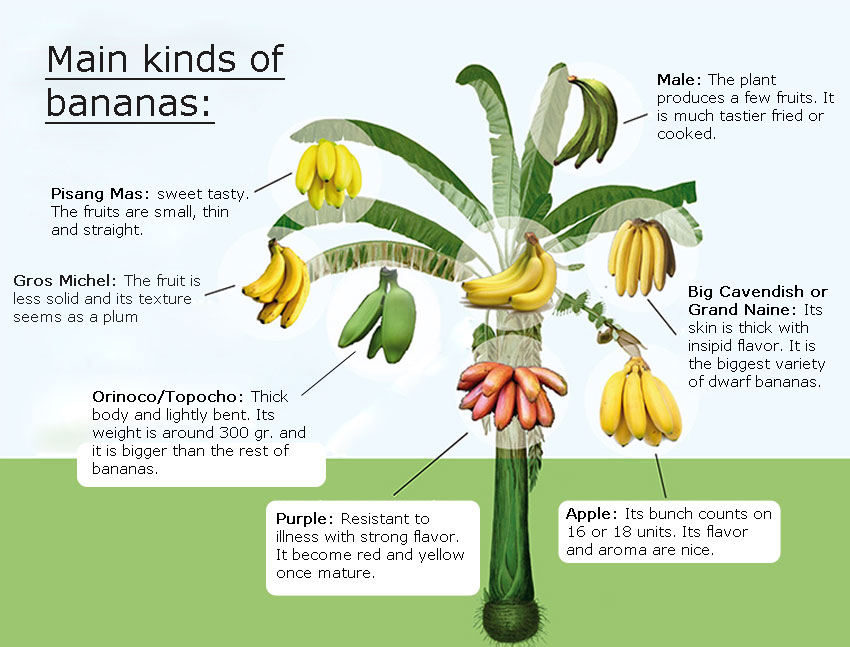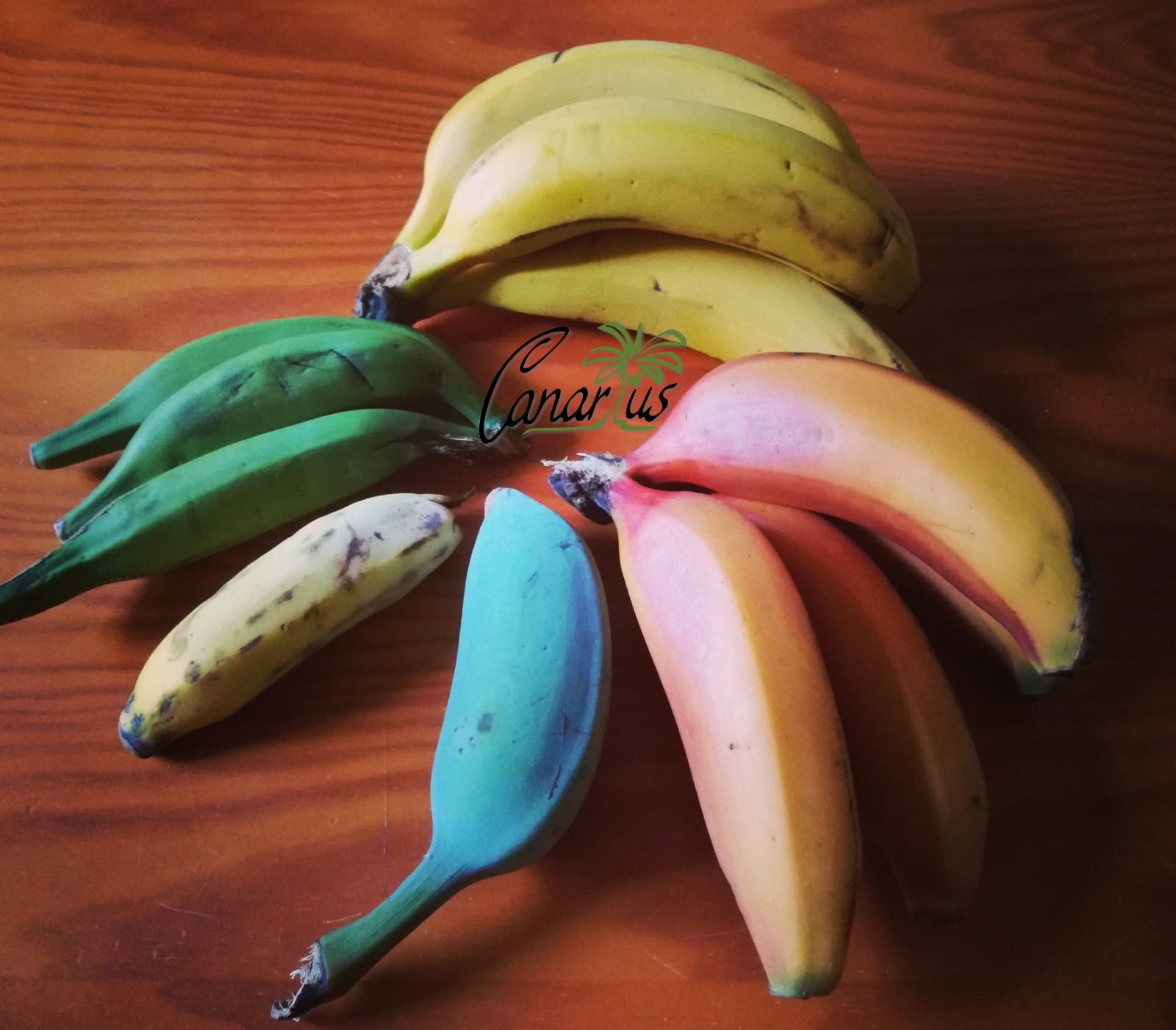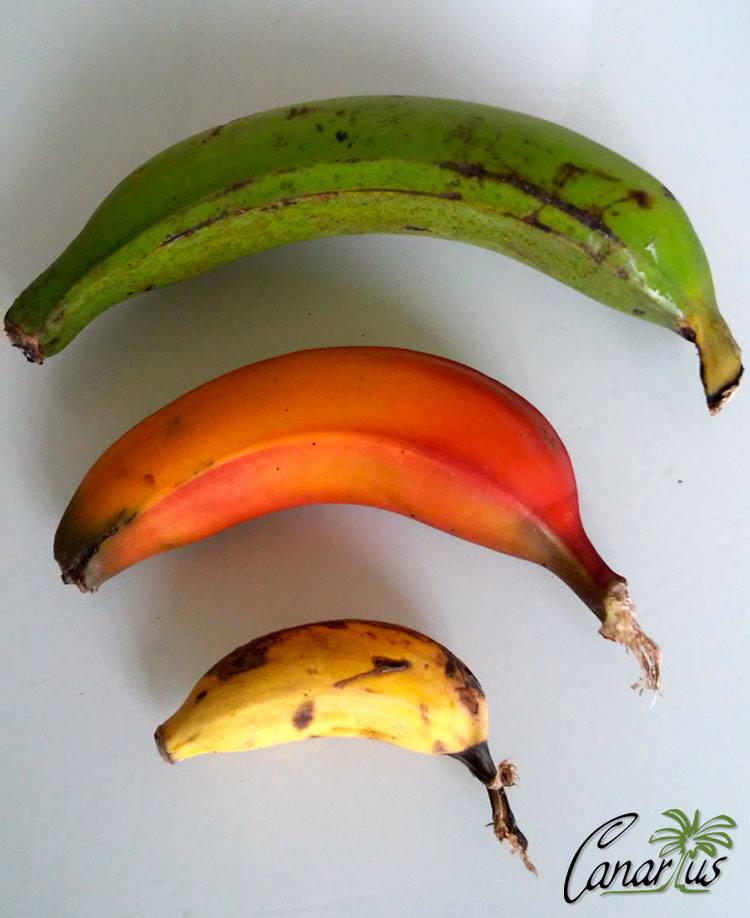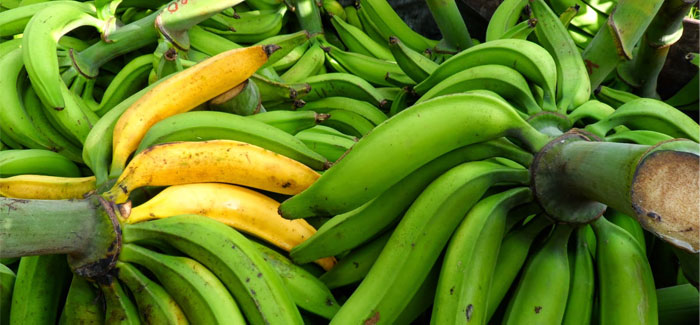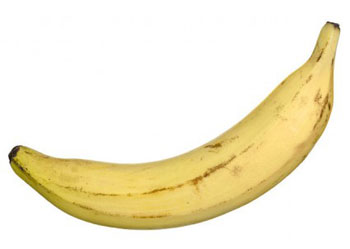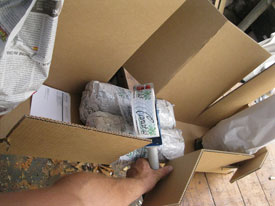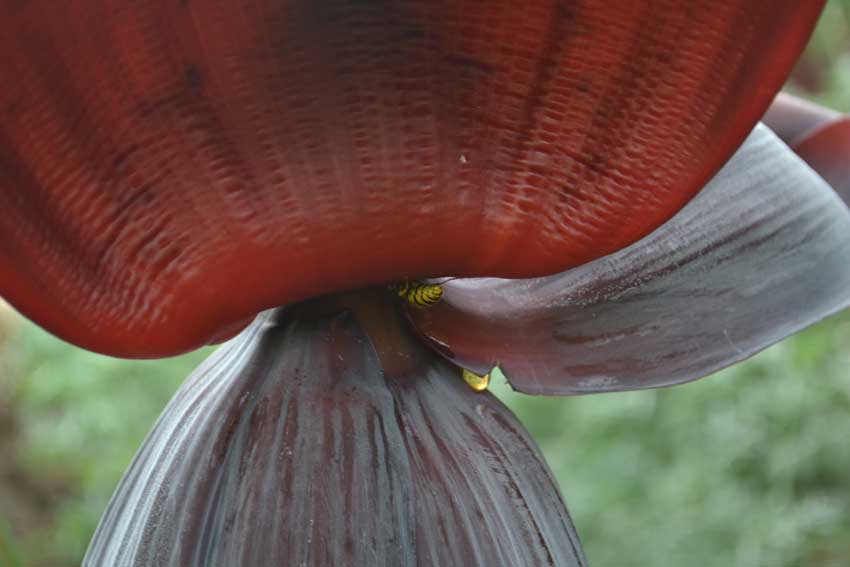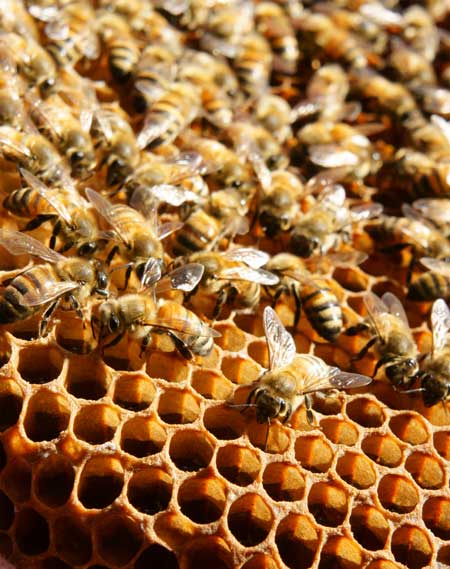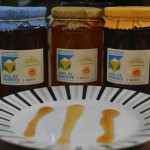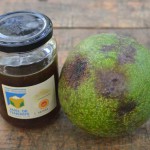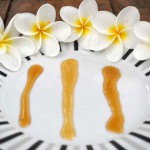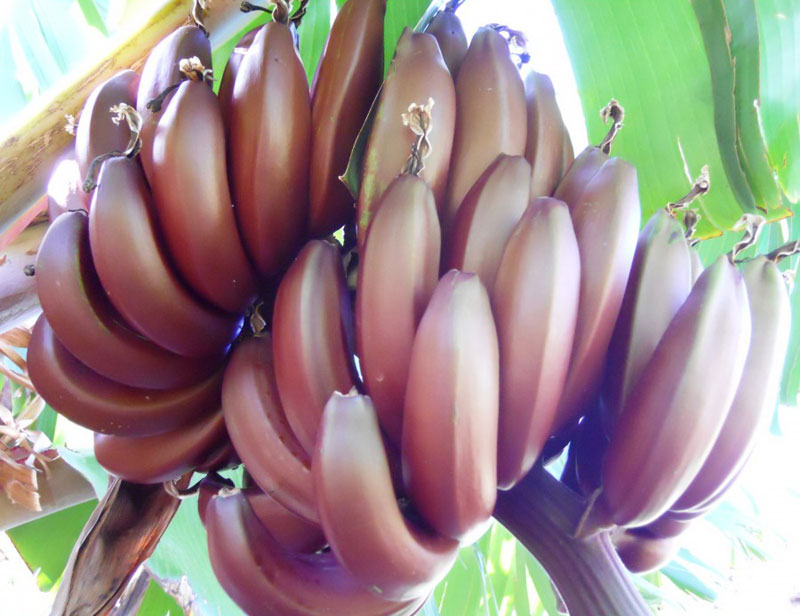
Banana is one of the most important crops which takes part of staple diet for millions of people around the world. Moreover, it is a strong source of income for producing countries, as well as for local and international markets. In this regard, there is a great diversity of bananas with different sizes (small, medium and large), colours and flavours, depending mostly on their genetic origin, but also on cultivation methods, soil types and climate. Most varieties originated in the far past by chance as seedless natural hybrids, from seeded wild ancestors. These seedless banana trees were kept in cultivation by people during centuries. Then spontaneous mutations occurred during cultivation and brought more and more diversity, with useful dwarf forms or more fruitful types. Recently, the first genetically modified banana trees have been also produced.
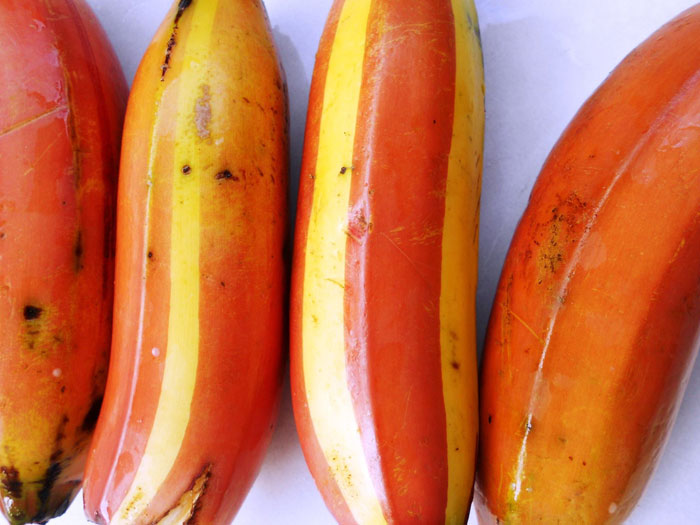
Exceptional case with yellow stripes
In this case, we are going to talk about a sort of fruit: the Red Banana (Musa cv. Figue Rose Naine), an Asian traditional variety, selected thousands of years ago due to its quality and its resistance to diseases caused by virus, bacteria, insects or fungi. This fruit is dark violet during the first part of the ripening process, but once it is fully ripe, it becomes two-toned (red and yellow). A colour that dominates in leaves and stems. Many people think that the Dwarf Red Banana (Musa CV. Figue Rose Naine) is much more aromatic and tastier than the classic yellow banana which we can often buy in the market: Cavendish. Fruits are also thicker and the flesh of this variety of banana is rose, rich in vitamins and tasty. Furthermore, it is very rich in provitamin A, almost 20 times more than a typical yellow banana. On the other hand, we must take into account that it is excellent if eaten warm, due to its flavour features from the pinkish flesh.
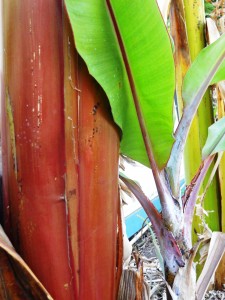
Red stem of a “dwarf red”
Coming from the botanical family Musaceae, this dwarf banana tree, as the name implies, Naine, is shorter than a normal banana tree, but stouter. A showy red colour is present in most parts of the plant, such as the leaf midrib or the whole stem, more accurately called a “pseudo-stem”. Red banana trees are regular producers but their fruit bunches are much shorter than bunches of commercial bananas. A lower yield means a higher price, so red bananas are indeed sold as delicacies in the world markets. In spite of its Asian origin, the name Figue Rose Naine was given in the French Caribbean island of Martinica. A name that coincides with the height of the plant (3 – 4 m) which is, short, strong and robust. These dwarf types of bananas can be grown in large containers and will do better than tall types. They can even be grown as indoor plants but they will not set fruit if direct sunlight is not provided. It is necessary to protect this banana tree from low temperatures (> 8º C), specially the youngest plants. Nowadays, this kind of banana is reproduced in vitro and grown on a commercial small-scale in the Canary Islands, where our online store Canarius: Anaga Market, is located, in the island of Tenerife. —- Right after, we present an infography about the main kinds of bananas: 